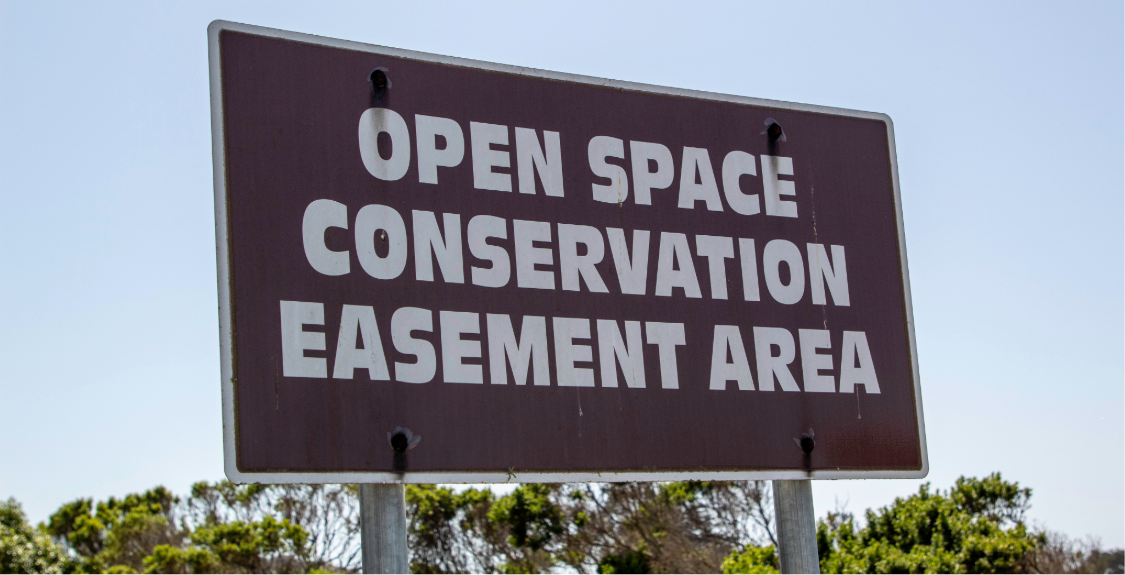AFM NEWS
Easements Explained: Differences, Benefits, and a Step-by-Step Guide

By Jennifer Hunt (Content Writer) and Chris Miller (Managing Director of Real Estate Services)
You’ve likely heard about easements, but what is the difference between a conservation easement and a road easement? While these two terms share a word, they have more differences than similarities. In this blog, we will dive into what an easement is, describe two common types of easements, and explore considerations for each.
An easement is a legal right granted to a person or entity to use another person's property for a specific purpose, such as access, utilities, or drainage, without owning it. It typically runs with the land and binds future property owners to those terms. Easements can impact or encumber a portion of a property or the whole property.
Conservation easements are voluntary, legal documents between a landowner and a land trust or governmental agency. Landowners may have a keen interest in conservation to secure the land’s natural resources, whether it is to protect wildlife habitat, preserve farmland from development, protect water quality, preserve a legacy, or restrict land use changes like development. These easements are usually permanent, even when the property is sold to a new owner. It’s important to note that landowners can continue to use the property for any allowed uses, such as farming, timber harvesting, recreation, or homesites, as long as they adhere to the terms of the conservation easement document. Not only are there preservation and ecological benefits for conservation easements, but there are financial ones, too; easements can decrease estate and property taxes, providing a valuable incentive for landowners. Some easements can be sold to easement holders that have specific preservation goals in an area to accomplish.
A road easement is a legal right that allows individuals, entities, or the public to use a specific portion of another person's property to access a road or travel between locations. The easement typically provides a pathway for drivable access with vehicles, log trucks, or farm equipment, ensuring access to landlocked properties or creating connectivity while the landowner retains ownership of the underlying property. Road easements are often recorded in property deeds and are permanently binding on future owners. Having legal access is critical to an owner being able to enjoy and benefit financially from their property.
While both types of easements require landowners to follow complex processes and engage with different agencies and attorneys, American Forest Management and AFM Real Estate can facilitate by working with various entities to help landowners accomplish their goals. Here are the steps for each:
Conservation Easements:
- Identify goals and determine which land resources need protection or may be an item of focus in your area.
- Work with a land management company and a land trust or conservation agency.
- Conduct a land evaluation to determine the land’s value, as certain ecological factors can impact the overall valuation.
- Negotiate the terms to ensure the land use objectives are clear and align with the values and goals of the easement.
- Hire an appraiser to help determine the tax benefits or eligibility for federal income tax deductions or incentives.
- Work with attorneys to finalize the agreement.
- Lastly, record the easement with local land offices so the agreement is binding not just for yourself but for all future landowners.
Road Easements
- Assess the need and specify the easement location (i.e., road location). Work with your land manager and a land surveyor to determine the exact location and route for the easement from the public road to your property.
- This is an important step: if the easement crosses another landowner’s property, meet with your neighbor to explain the purpose and negotiate any terms and conditions. Your land manager and attorney can help facilitate these discussions for you if a third party is needed. Work with an attorney to draft an agreement that covers the size and location of the easement, including the timeframe, permitted uses, and any needed compensation.
- Enlist the help of your land manager for construction advice if needed or to obtain cost quotes.
- Finally, record the easement with local land offices to ensure it’s legally binding and easily accessible.
While both of these easements may seem rather involved or complex, their benefits far outweigh any complications in the bureaucratic process. Seeking the help of a trusted land manager can guarantee that the goals and objectives for each type of easement are met, giving you peace of mind. Our team is here to help you navigate that process every step of the way.
